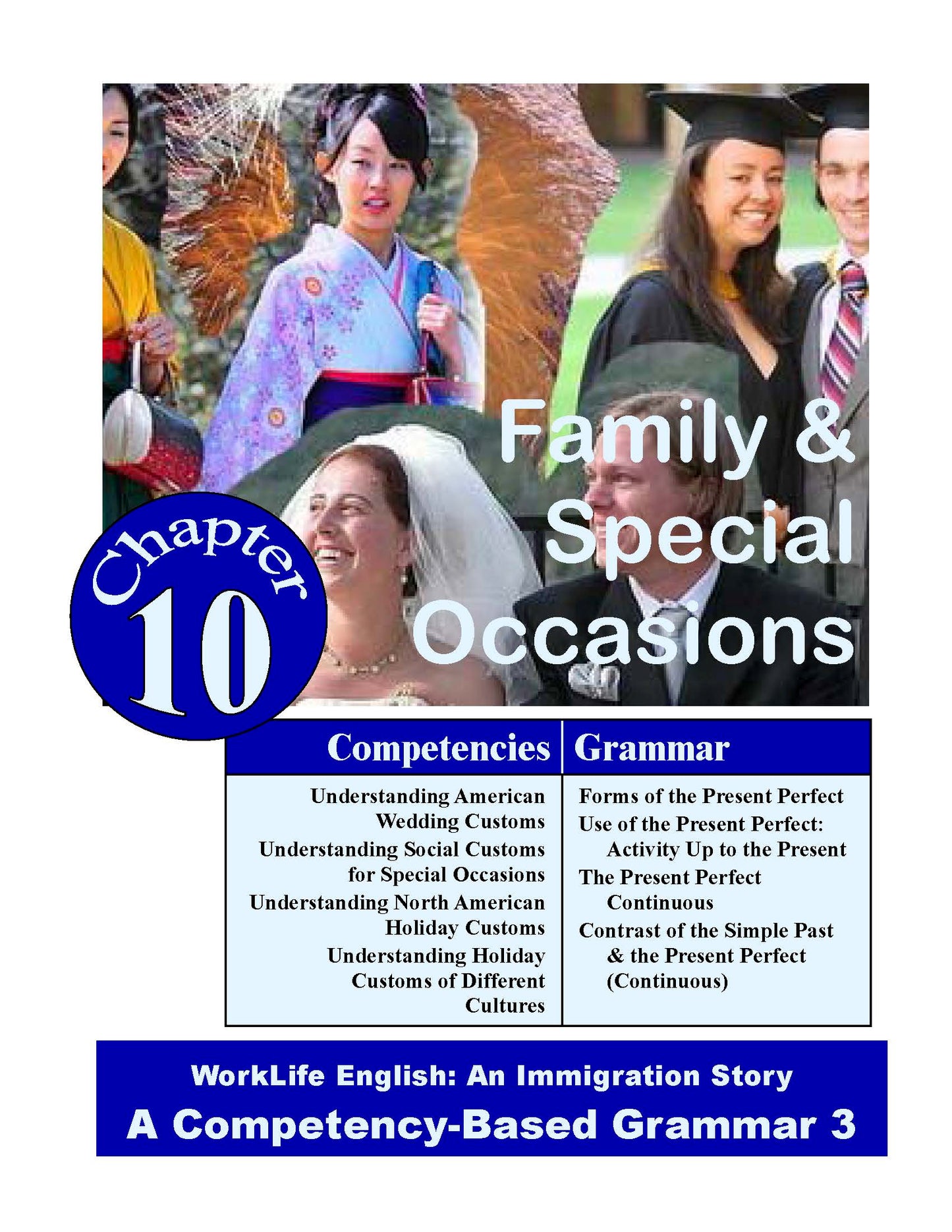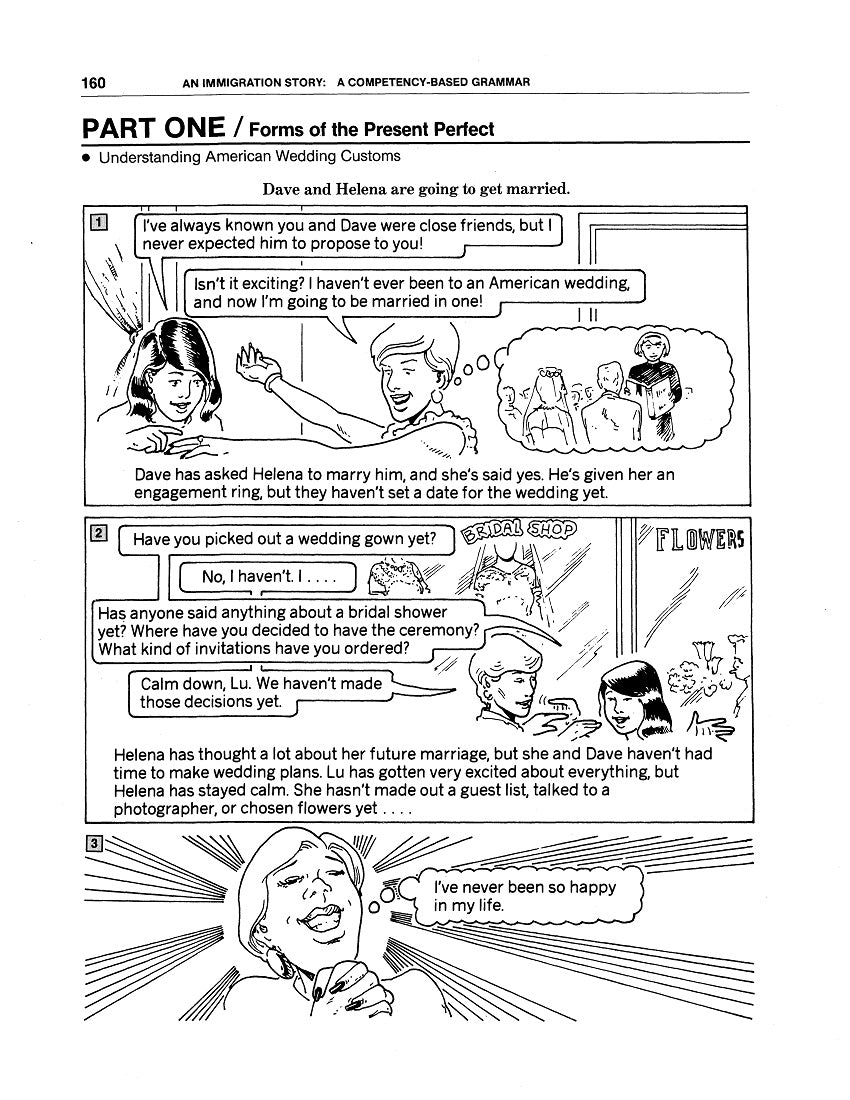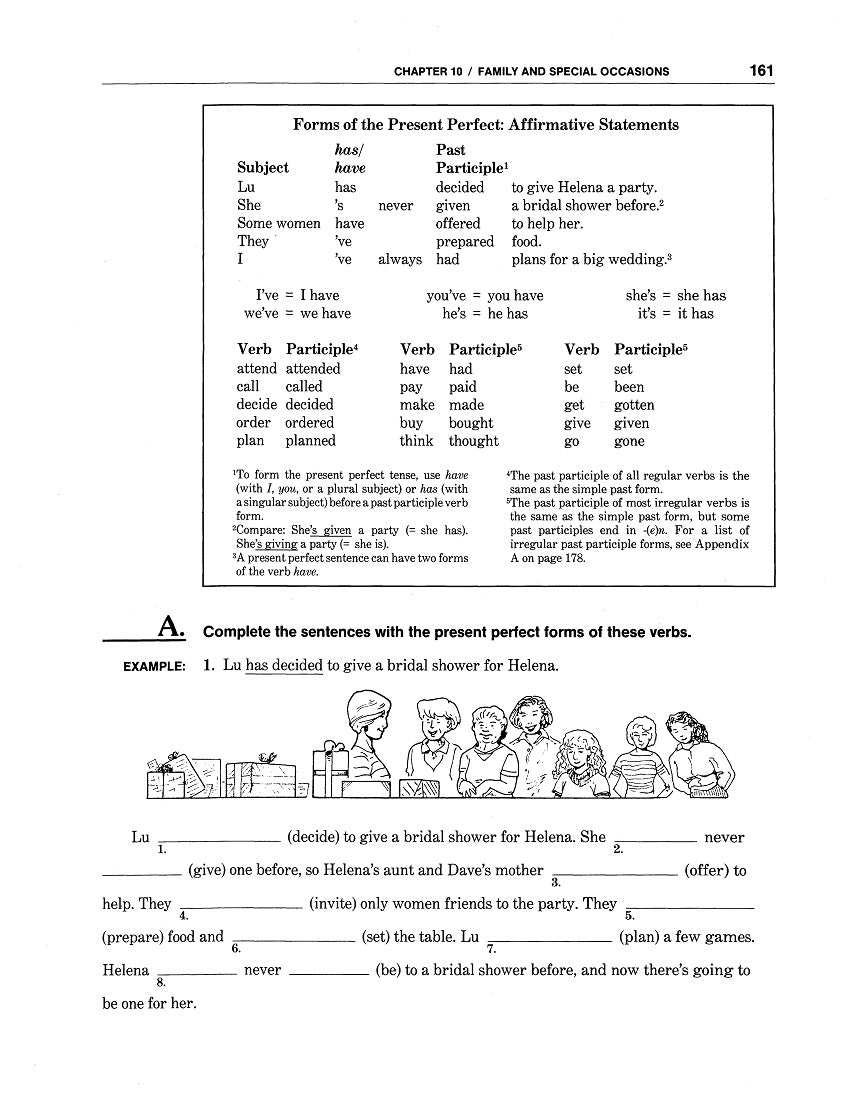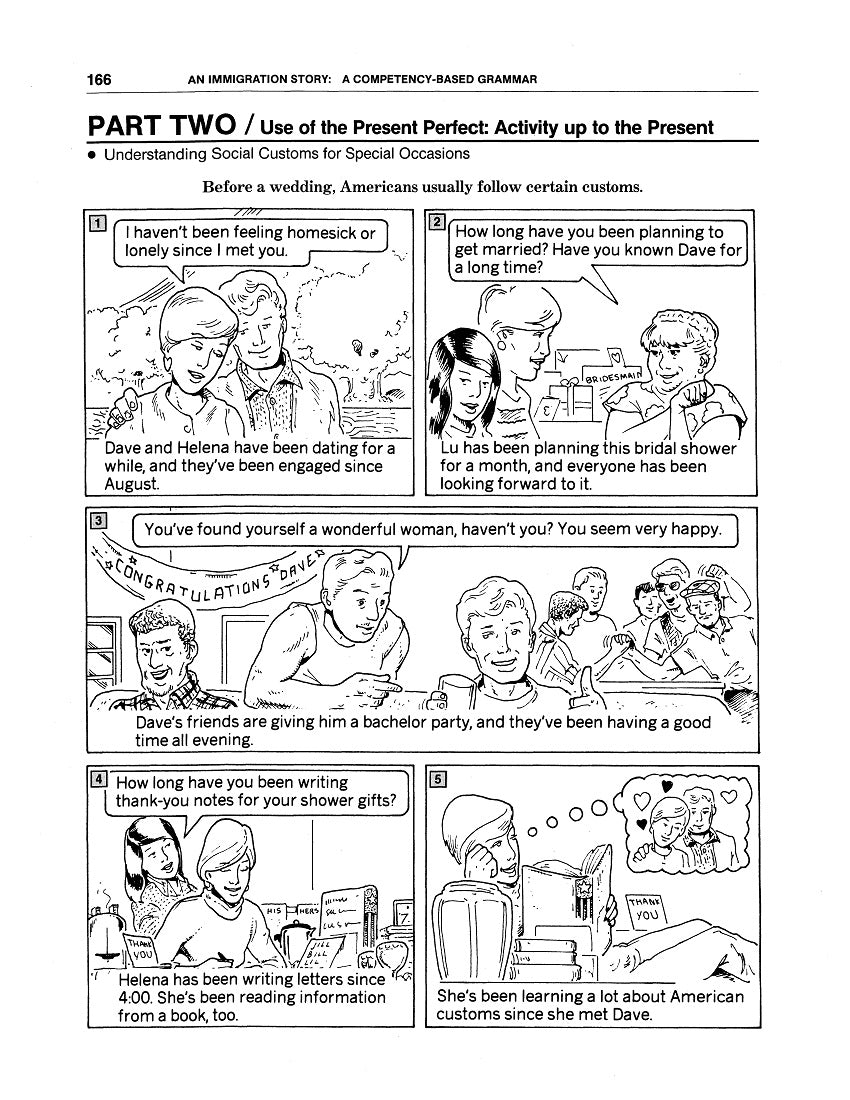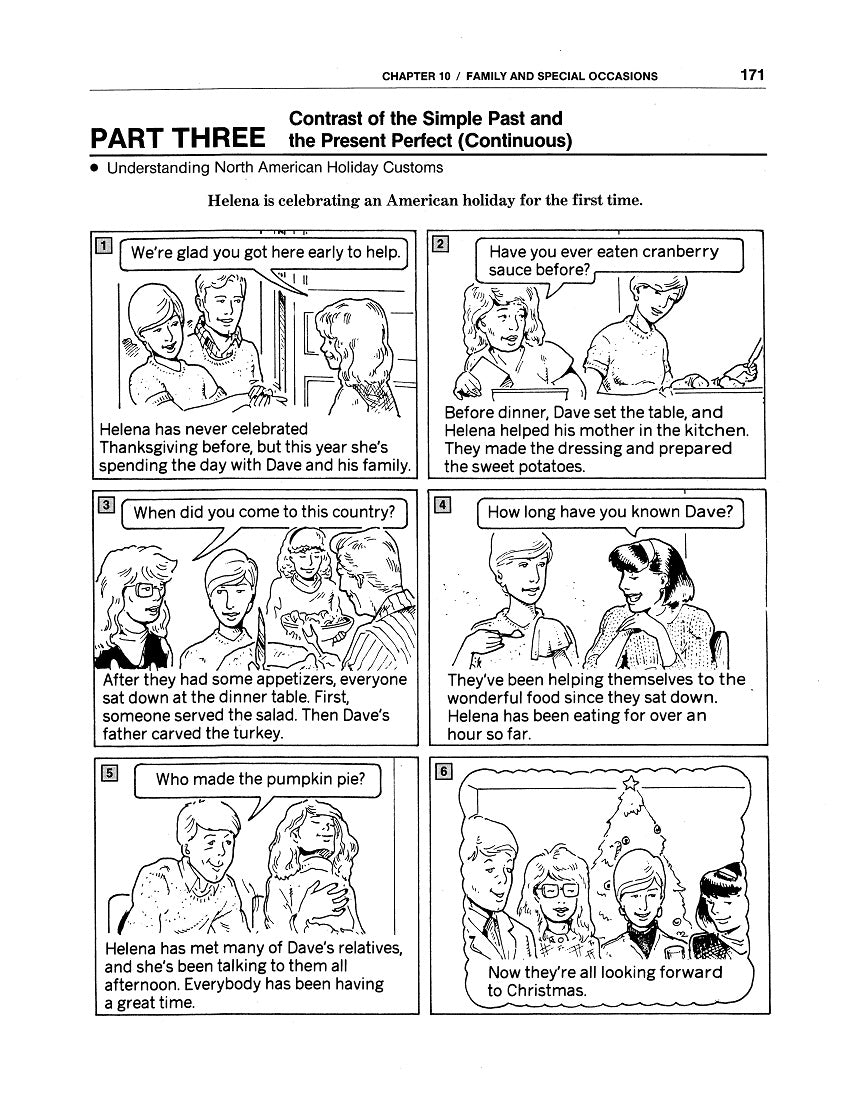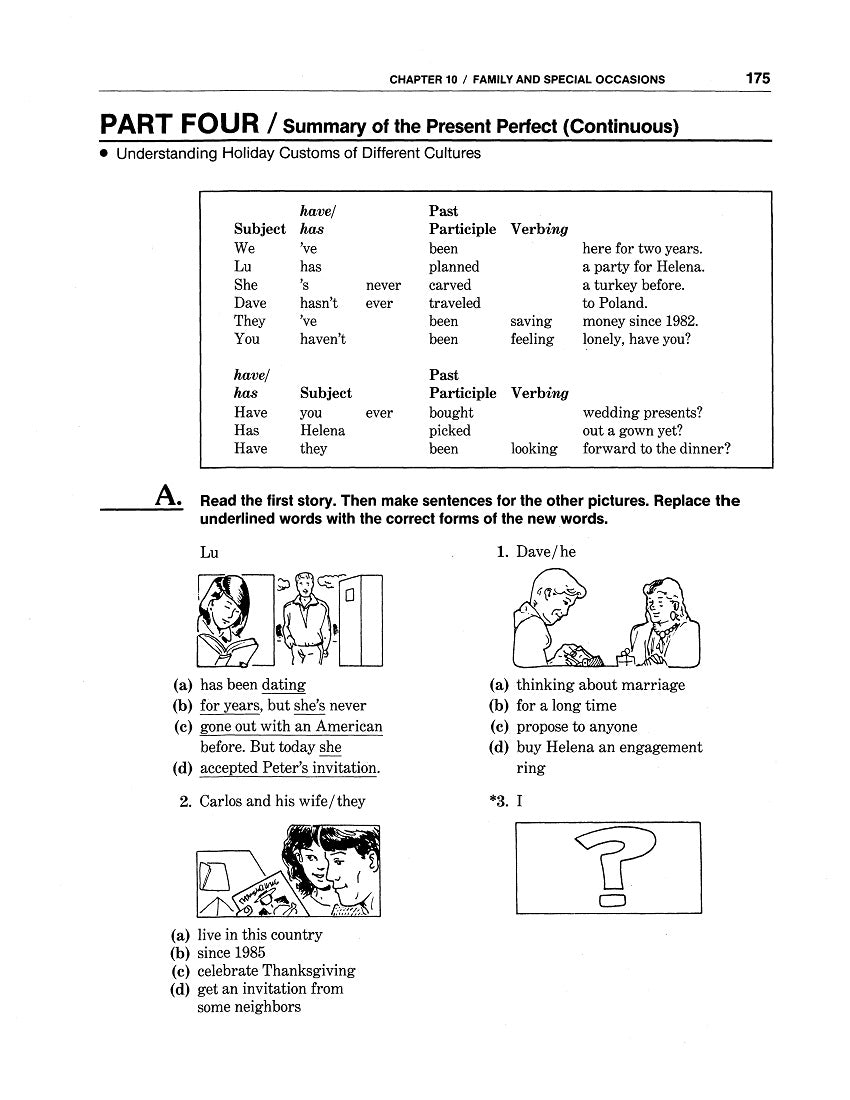1
/
of
6
Work/Life English
D-13.01 Start Using Present Perfect (Continuous) Tenses
D-13.01 Start Using Present Perfect (Continuous) Tenses
Regular price
$5.00 USD
Regular price
Sale price
$5.00 USD
Unit price
/
per
Parts One though Four of Chapter 10: the Present Perfect Tenses (“Family & Special Occasions”) of WorkLife English Grammar 3: An Immigration Story, pages 159-178
20 pages
Who It’s For: Teachers, Helpers, & (Low to High) Intermediate English-Language Learners Eager to Progress in Their Study of All Verb Tenses & Aspects
Why It’s Useful: Though not so critical as the Simple (Present, Future, & Past) Tenses, the Perfect Verb Tenses also contribute to effective understanding, expression, and communication in English. To acquire first are the Present Perfect (Continuous) forms (have/has + Past Participle—or have/has been + VERBing)—in Affirmative & Negative Statements, Questions & Answers. Then speakers / writers can use these to indicate “Activity Up to the Present.” While contrasting what they know about the “present perfect time frame” with the simple past, they can sum up the grammar and contexts.
What You’ll Do:
[1] In the page 159 Chapter Opener, look at the visual montage. Peruse the forms or patterns relevant to the Grammar: Present Perfect (Continuous) (vs. Simple Past) Forms & Uses—as well as the Competency-Based Content (wedding and social customs for special occasions and holidays in North American and other cultures).
[2] In Part One on pages 160-165, use the Strip Story to begin “Understanding American Wedding Customs.” Recognize “Forms of the Present Perfect (Continuous).” With the following boxed Explanations + Exercises A-*G, practice these.
[3] Part Two on pages 166-170 will help you / your students in the most common “Use of the Present Perfect (Continuous): Activity Up to the Present” as well as “Understanding Social Customs for Special Occasions.”
[4] Starting with a Strip Story about celebrating Thanksgiving, Part Three on pages 171-174 contextualizes contrasts in forms and time expressions for the Simple Past with those of the Present Perfect (Continuous).
[5] The Chapter ends with a Summary of the tense forms and uses. After its Sentence Pattern Box and Exercises, which include discussions of special occasions around the world, there’s an Appendix of Irregular Verb Forms that displays three “Parts” of each listing: Simple Form, Past Form, Past Participle.
Couldn't load pickup availability
